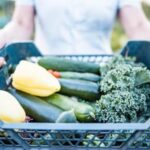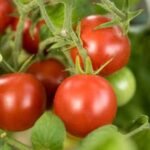Are you interested in growing your own vegetables but lack a traditional garden space? Container gardening is the perfect solution for individuals with limited outdoor areas or those residing in urban environments. In this article, we will explore the concept of container gardening and its benefits specifically for growing vegetables, providing you with the essential information to start your own thriving vegetable container garden.
Container gardening involves growing plants in pots, planters, or raised beds instead of directly in the ground. This method offers numerous advantages, including flexibility in choosing the location, minimal maintenance, and the ability to control soil quality. By utilizing containers, even individuals with small balconies or patios can enjoy fresh homegrown vegetables without needing a vast outdoor area.
When it comes to choosing the right containers for gardening vegetables, there are several options to consider. From traditional clay pots to modern self-watering planters, each type has its advantages and disadvantages. It is important to select containers that provide adequate drainage and enough space for root growth to ensure healthy vegetable development. Additionally, considering factors such as material durability and portability can help determine which containers are best suited for your individual needs.
Choosing the Right Containers
When it comes to container gardening for vegetables, choosing the right containers is crucial for the success of your plants. There are several options available, each with its own pros and cons. Understanding the different types of containers will help you make an informed decision based on your specific needs and gardening goals.
Pots
Pots are one of the most common types of containers used for vegetable gardening. They come in various sizes and materials, including plastic, ceramic, and terracotta. Pots are versatile and easy to move around, making them ideal for small spaces or areas with limited sunlight. However, they may require more frequent watering due to their limited soil volume.
Planters
Planters are larger than pots and often have built-in drainage systems to prevent waterlogging. They can be placed on patios, balconies, or any flat surface, providing a stable environment for vegetable growth. Planters offer more space for root development compared to pots, allowing vegetables to thrive and produce bountiful harvests.
Raised Beds
Raised beds are ideal for growing vegetables in containers as they provide ample space for deep root growth and better drainage. They are also easier to maintain and offer protection against pests such as slugs and snails. Additionally, raised beds can be customized in size and height according to your preferences, making them a versatile option for container gardeners.
Considering the space available, sunlight exposure, and your gardening skills will help determine which type of container is best suited for your vegetable garden. Keep in mind that the right container will provide a conducive environment for healthy vegetable growth while minimizing potential issues such as over-watering or poor drainage.
Selecting the Best Location
When it comes to growing vegetables in containers, selecting the right location is crucial for the success of your plants. Here are some tips on choosing the ideal location for your vegetable containers:
- Sunlight: Most vegetables require at least 6-8 hours of sunlight per day. When choosing a location for your containers, look for a spot that receives plenty of sunlight throughout the day. South-facing areas or open spaces with minimal shade are ideal for vegetable container gardening.
- Water Access: Ensure that the location you choose has easy access to water. Whether you plan to water your containers manually or use a drip irrigation system, having a water source nearby is essential for keeping your vegetable plants healthy and hydrated.
- Protection from Pests: Consider placing your containers in an area that is protected from pests such as squirrels, rabbits, and birds. You can use physical barriers like mesh netting or wire cloches to prevent these animals from accessing your vegetables.
In addition to these tips, it’s also important to consider factors such as wind exposure and air circulation when selecting the best location for your vegetable containers. Avoid placing them in windy areas that can damage the plants or impede their growth. Adequate air circulation can help prevent issues like mold and mildew on foliage.
By carefully considering these factors when choosing the location for your vegetable containers, you can create an optimal environment for your plants to thrive and produce a bountiful harvest.
Whether you have limited outdoor space or simply want the convenience of having fresh produce within arm’s reach, container gardening offers a flexible and efficient way to grow vegetables. With the right containers and suitable locations, anyone can enjoy the benefits of homegrown vegetables regardless of their living situation.
Soil and Fertilizer
When it comes to container gardening, the quality of soil and fertilizers used can make a significant difference in the health and growth of your vegetables. With limited space in containers, it’s crucial to provide the best possible growing environment for your plants.
High-quality soil is essential because it provides the necessary nutrients and support for the roots of your vegetables. When choosing soil for your containers, look for a well-draining potting mix that is rich in organic matter.
In addition to high-quality soil, using organic fertilizers is equally important for healthy vegetable growth in containers. Organic fertilizers are derived from natural sources and provide a slow release of nutrients, which can help maintain a balanced and fertile soil environment for your plants. Avoid using synthetic or chemical-based fertilizers, as they can be too harsh for the confined space of a container garden and may lead to nutrient imbalances or even damage to your vegetables.
One popular option for organic fertilizer in container gardening is compost, which adds valuable nutrients to the soil and improves its structure. Compost can be mixed into the potting mix before planting or used as a top dressing throughout the growing season.
This natural approach not only nourishes your vegetables but also promotes beneficial microbial activity in the soil. When it comes to choosing high-quality soil and organic fertilizers for your vegetable containers, investing in these essential components will ultimately lead to healthier plants and a more bountiful harvest.
| Container Gardening Component | Importance |
|---|---|
| High-Quality Soil | Provides necessary nutrients and support for roots |
| Organic Fertilizers | Provide slow release of nutrients; maintain balanced and fertile soil environment |
| Compost | Adds valuable nutrients; improves soil structure; promotes beneficial microbial activity |
Vegetable Selection
When it comes to choosing the best vegetables for container gardening, there are several factors to consider. Not all vegetables thrive in containers, so selecting the right varieties is crucial for a successful harvest. Some of the best vegetables for container gardening include tomatoes, peppers, lettuce, and herbs. These vegetables are well-suited for growing in confined spaces and can provide a bountiful yield when properly cared for.
Tomatoes
Tomatoes are one of the most popular choices for container gardening due to their versatility and productivity. When choosing tomato varieties for containers, look for compact or determinate varieties that are specifically bred for small spaces. These types of tomatoes will require less space and support compared to indeterminate varieties. Additionally, cherry and patio tomatoes are excellent choices for containers due to their smaller size and prolific fruiting.
Peppers
Peppers, such as bell peppers and chili peppers, can also thrive in containers with the right care. Look for pepper varieties that are known for their compact growth habit, as these will fare better in confined spaces. Additionally, consider the size of the pepper plants when selecting containers – larger pots or planters will accommodate larger pepper plants more effectively.
Lettuce
Lettuce is an ideal choice for container gardening, especially for those with limited space. Leafy greens like lettuce can be grown in shallow containers and have a relatively quick turnaround from planting to harvest. When selecting lettuce varieties for container gardening, opt for loose-leaf or cut-and-come-again varieties that allow you to pick individual leaves as needed without disturbing the entire plant.
Herbs
Herbs such as basil, parsley, and mint are well-suited for growing in containers due to their compact growth habits and minimal space requirements. When choosing herb varieties for container gardening, consider your culinary preferences and select herbs that you use frequently in cooking. Additionally, pay attention to the mature size of each herb variety to ensure they have enough room to grow without overcrowding other plants in the container garden.
By carefully selecting the best vegetable varieties suited for container gardening and considering their individual requirements, you can create a thriving container garden that provides a bountiful harvest of fresh produce throughout the growing season.
Planting and Care
Once you have selected the right containers and chosen the best location for your vegetable garden, it’s time to plant and care for your vegetables. Whether you are growing tomatoes, peppers, lettuce, or herbs, there are essential steps to follow to ensure healthy growth and a bountiful harvest. Here are some step-by-step instructions on how to plant vegetables in containers, including watering, pruning, and pest control.
First, you will need to fill your containers with the appropriate soil mix. A high-quality potting mix that is well-draining and rich in organic matter is essential for container gardening. It’s important to avoid using regular garden soil as it may become compacted and hinder root growth in the confined space of a container.
Next, you should select the right vegetable varieties for container gardening. Compact or dwarf varieties of vegetables are ideal for small spaces and can thrive in containers. When planting seeds or seedlings, make sure to follow spacing recommendations to prevent overcrowding and competition for nutrients.
Watering is crucial for the success of your container garden. Containers tend to dry out faster than traditional garden beds, so it’s important to check the moisture level regularly and water as needed. Avoid overwatering by allowing the top inch of soil to dry out between waterings.
In terms of pest control and maintenance, regular monitoring of your plants is key. Be on the lookout for common pests such as aphids, spider mites, and caterpillars, which can damage your vegetables. Consider using natural remedies like neem oil or introducing beneficial insects like ladybugs to keep pest populations in check.
Overall, planting and caring for vegetables in containers requires attention to detail but can be incredibly rewarding. With proper care and maintenance, you can enjoy a successful harvest of fresh produce from your container garden.
| Container Type | Pros | Cons |
|---|---|---|
| Pots | Portable / Easy to move around | May require more frequent watering due to limited soil volume |
| Planters | Comes in various sizes / Can be decorative | Limited depth may restrict root growth of certain vegetables |
| Raised Beds | Allows for deeper root growth / Good drainage | Might take up more space / More expensive than pots or planters |
Harvesting and Maintenance
After all the hard work of planting and caring for your vegetables in containers, it’s time to reap the rewards of your efforts. Harvesting vegetables grown in containers requires a bit of knowledge and timing to ensure that you get the most out of your crops. Here are some tips on when and how to harvest your container-grown vegetables:
1. Timing is everything: Different vegetables have different optimal harvesting times, so it’s important to research each specific plant variety. For example, tomatoes should be harvested when they are fully colored but still firm, while peppers should be picked when they reach full size and color. Make sure to keep an eye on your plants and harvest them at the right time to enjoy the best flavor and texture.
2. Use the proper tools: Some vegetables can be easily pulled off by hand, while others may require scissors or pruning shears for harvesting. It’s important to use clean, sharp tools when harvesting to avoid damaging the plants or causing unnecessary stress.
3. Regular maintenance is key: To ensure that your containers continue to produce healthy crops season after season, proper maintenance is essential. After each growing season, take the time to clean out old vegetable debris from your containers, replace worn-out soil with fresh potting mix, and inspect containers for any damage or wear that may need repair.
By following these tips on harvesting and maintaining your vegetable containers, you can enjoy a bountiful harvest year after year while keeping your gardening space in top condition. With a little care and attention, container gardening can provide a sustainable way to grow delicious vegetables even in limited spaces.
Troubleshooting Common Issues
In conclusion, container gardening provides an excellent solution for individuals with limited space or poor soil quality to grow their own vegetables. The use of various types of containers, such as pots, planters, and raised beds, allows for a wide range of vegetables to thrive in urban environments or on balconies and patios. The key is to carefully select the right containers, location, soil, and fertilizers to ensure successful growth of vegetables in these confined spaces.
One of the most important aspects of maintaining a successful vegetable container garden is being proactive in addressing potential issues that may arise. Common problems such as disease, over or under-watering, and nutrient deficiencies can significantly impact the health and yield of the plants.
By closely monitoring the plants and implementing preventive measures, gardeners can minimize the risk of these issues affecting their vegetables. Additionally, seeking advice from local gardening experts or resources can also be helpful in troubleshooting common problems.
Ultimately, container gardening offers a versatile and convenient way to enjoy homegrown vegetables without requiring a traditional garden plot. With proper care and maintenance, along with preemptive troubleshooting for potential issues like disease and nutrient deficiencies that may arise when gardening vegetables in containers can help ensure a bountiful harvest year after year. So don’t let limited space deter you from growing your own delicious produce – give container gardening a try.
Frequently Asked Questions
What Is the Best Type of Container to Grow Vegetables In?
The best type of container to grow vegetables in is one that provides adequate drainage and sufficient space for the plant’s roots to grow. Containers made of plastic, ceramic, or wood can all work well for growing vegetables, as long as they meet these requirements.
What Is the Cheapest Container for Growing Vegetables?
When it comes to finding the cheapest container for growing vegetables, look no further than repurposed items like buckets, storage bins, or even old tires. These can be obtained at little to no cost and can work just as effectively as store-bought containers.
What Pots to Use for Vegetable Garden?
The pots to use for a vegetable garden should ideally be large enough to accommodate the specific vegetables being grown. For larger plants like tomatoes or peppers, 5-gallon pots are recommended, while smaller plants like lettuce or herbs can thrive in smaller pots.
It’s important to choose pots that have good drainage and are made of a durable material that won’t degrade over time.

If you’re looking to get into vegetable gardening, or are just looking for some tips on how to make your current garden better, then you’ve come to the right place! My name is Ethel and I have been gardening for years. In this blog, I’m going to share with you some of my best tips on how to create a successful vegetable garden.





